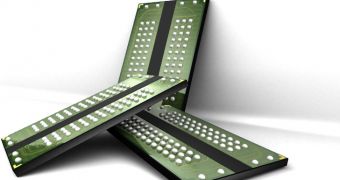The times when prices of dynamic random access memory were in free fall are long past, and Micron, the world’s third greatest supplier, is proving all too eager to draw attention to this particular fact.
Had the suspicions of foul play degenerated into an outright legal action, Micron might not have come out and so plainly said that the memory industry wouldn't allow price cuts for many months.
For those not up to speed with all the happenings on the memory IT segment, makers of chips have been deliberately reducing their manufacturing capacity.
It is the only reason why a tentative balance between supply and demand was finally attained a few months back.
Before that, inventories were too high and people just didn't buy enough, reflecting the poor demand for PCs.
Eventually, DRAM makers were accused of artificially/illegally fixing prices, but that particular problem hasn't become too serious yet.
As such, Micron saw no point in not feeling giddy, figuratively speaking, that prices would keep growing until 2014.
“[DRAM market] supply dynamics in particular appears to be healthy looking forward,” said Mark Durcan, chief executive officer of Micron, during a conference call with financial analysts.
“We believe the DRAM industry wafer capacity will be down in both 2013 and 2014 and process technology upgrades are being stressed out, thereby reducing supply growth compared to historical trends.”
Part of the reason is that Chinese manufacturers of cheap tablets have been increasing their DRAM orders, lessening the effects of the waning PC industry. And with production not boosting, this has shifted the supply-demand balance toward the latter.
DRAMeXchange, a research division of TrendForce, reports that DRAM prices have considerably increased this month (March 2013). The average selling price for 4 GB DDR3 modules at 1600 MHz was $23 / 17.65 Euro at the middle of the month.

 14 DAY TRIAL //
14 DAY TRIAL //